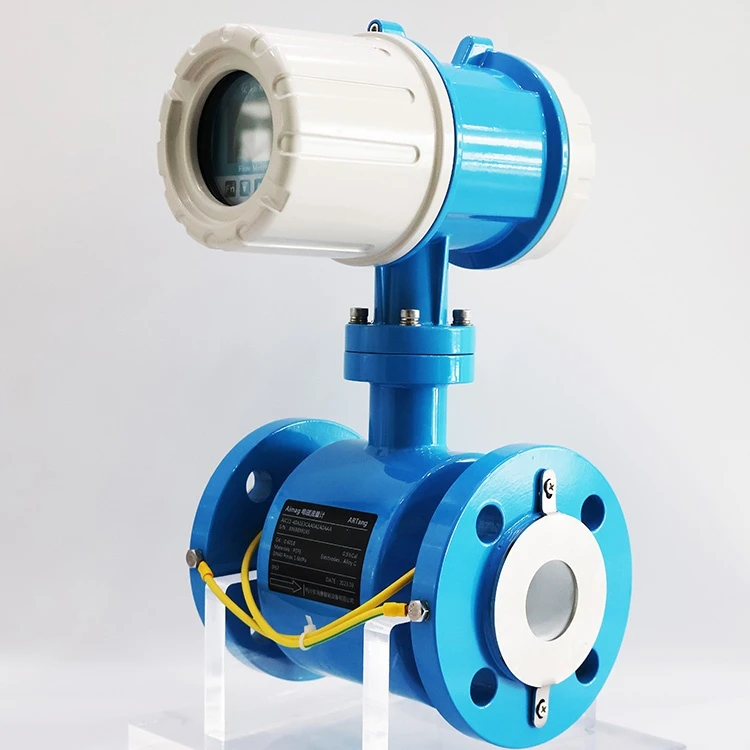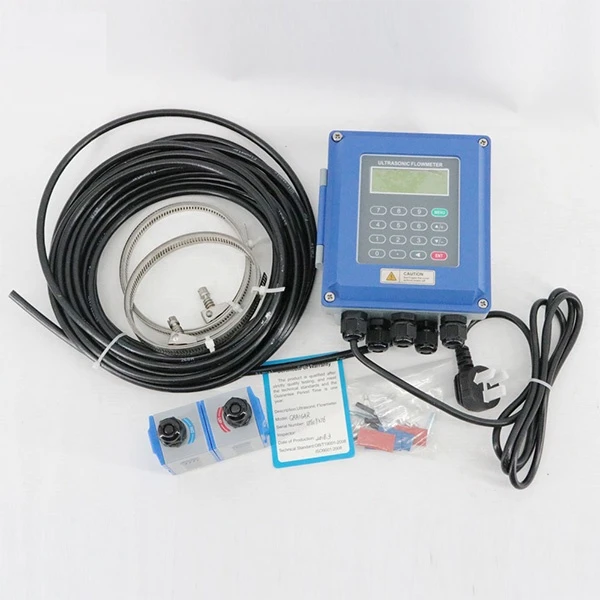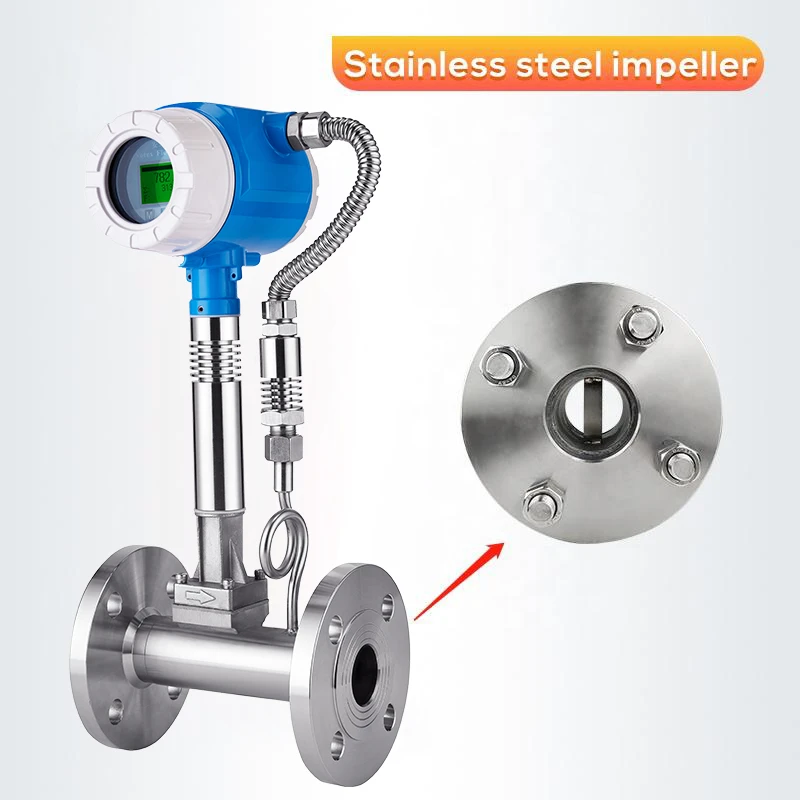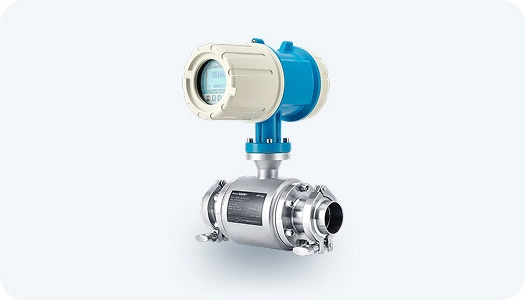-
Date:2025-11-20
-
Page View:1
There are many types of water flowmeters, each with its own suitable applications and advantages. Flow meters can measure a wide range of media, including water (liquids), gases, oils, viscous fluids, and corrosive fluids. Choosing the right flow meter ensures accurate water flow measurement across different application scenarios. Each type of flow meter has its strengths and limitations, and understanding these characteristics is essential for selecting the best instrument.
Different Types of Water Flowmeters
Electromagnetic Digital Water Flow Meter
An electromagnetic flow meter is an instrument based on Faraday’s law of electromagnetic induction, designed to measure conductive water and liquids. It is not affected by fluid density, viscosity, or temperature, and is suitable for measuring conductive liquids. However, it cannot be used for non-conductive liquids such as oils. It can handle measurement challenges that other flow meters struggle with, such as dirty water, corrosive water, and other difficult media.
Key Features of Our Magnetic Flow Meters:
High Accuracy: Providing precise and reliable measurements is essential for process control and optimization.
Extensive Flow Range: Accommodating a wide variety of flow rates, it is suitable for diverse industrial applications.
Durable Construction: Designed to withstand harsh and demanding environments, ensuring longevity and reliability.
Low Maintenance Requirements: Engineered for minimal maintenance needs, reducing downtime and operational costs.
Temperature and Pressure Resilience: Capable of operating under a wide range of temperature and pressure conditions, making them versatile for various applications.
Ultrasonic Water Flow Meter
An ultrasonic flow meter measures water flow velocity and flow rate using ultrasonic transit time technology. It works by installing one or more ultrasonic sensors on the pipe and measuring the time it takes for the ultrasonic signal to travel through the flowing water. The flow rate is then calculated based on the time difference. Ultrasonic flow meters are suitable for various liquid media and offer non-contact measurement, zero pressure loss, and high reliability. They are widely used in water supply, wastewater treatment, and energy applications. They are especially ideal for large-diameter pipelines as high-capacity water flowmeters.
Advantages of Ultrasonic Flow Meters:
Non-contact water measurement—clamp-on sensors are simply attached to the outside of the pipe.
No flow obstruction inside the pipe, resulting in zero pressure loss.
A cost-effective digital water flowmeter solution for large water pipelines.
Disadvantages of Ultrasonic Flow Meters:
Transit-time ultrasonic flow meters are suitable only for clean water and cannot be used in wastewater or water with suspended particles or air bubbles. Doppler ultrasonic flow meters can measure wastewater but have lower accuracy.

Electromagnetic Digital Water Flow Meter

Ultrasonic Water Flow Meter
Vortex Flow Meter
A vortex flow meter is used for measuring the flow of gases, steam, and liquids in industrial pipelines, including water. It offers a wide measuring range, low pressure loss, no moving mechanical parts, durable construction, convenient installation and maintenance, strong anti-interference capability with a new circuit design, and high stability and accuracy.
Advantages of Vortex Flow Meters:
Simple and robust structure with no moving parts inside the sensor.
Suitable for various types of water, such as standard clean water, high-temperature water, condensate, demineralized water, boiler feedwater, and hot water measurement. The maximum water temperature can reach 300°C.
Accuracy: ±1.0% for water flow measurement.
Wide turndown ratio, typically around 1:10 for water.
Minimal pressure loss in closed water pipelines.
Industrial digital water flow meters with electronic display, current output, 4–20 mA, pulse output, or HART communication.
Coriolis Mass Water Flow Meter
A Coriolis mass flow meter measures water mass flow directly based on the principle that the Coriolis force generated in a vibrating tube is proportional to the mass flow of the fluid. Coriolis water flow meters are not inexpensive and are generally not considered an economical solution for standard water measurement; however, they offer extremely high accuracy, with precision reaching up to ±0.1%.
They can measure various types of water, drilling mud, slurry, pulp, sludge, and more, making them suitable as online digital mass flow meters.

Vortex Flow Meter

Coriolis Mass Water Flow Meter
Turbine Flow Meter
A turbine flow meter is a compact and lightweight type of water flowmeter. Depending on the measurement medium, turbine meters are available for both liquids and gases. They are widely used for measuring petroleum, natural gas, organic and inorganic liquids, coal gas, and more. They are commonly seen in LPG systems, large crude oil transfer operations, and gathering stations, and are often used for trade and custody transfer.
Turbine flow meters offer high accuracy, excellent repeatability, a compact and lightweight structure, and high flow capacity, making them one of the commonly used water flow meters.
Mechanical Water Flow Meter
Mechanical water flowmeters measure water volume directly through mechanical components such as rotors or turbines. Typical examples include turbine flow meters and rotameters.
Turbine flow meters use water flow to drive the turbine blades, and the flow rate is calculated by detecting the rotational speed. They offer high accuracy and fast response, making them ideal for clean liquid measurement.
Rotameters, on the other hand, indicate flow based on the float’s position inside a tapered tube. They feature simple construction and low cost but are sensitive to fluid viscosity and are typically used for small flow applications.
Choosing the Right Water Flowmeter for Your Application
Selecting the right water flowmeter for your specific application requires careful consideration of several factors, including flow range, pressure and temperature conditions, the type of liquid being measured, and the required accuracy.
For example, if you need to measure water flow in a residential setting, a digital water flowmeter with a wide flow range and high-temperature tolerance may be suitable. In industrial environments, where high flow rates and harsh conditions are common, an electromagnetic flow meter with excellent pressure and temperature handling capabilities is often a better choice.
Understanding the different types of water flowmeters is crucial for effectively monitoring and managing water usage. Choosing the right meter for your application and maintaining it properly ensures accurate measurements and efficient water management.
Whether you are using an electromagnetic flow meter, ultrasonic flow meter, or another type, each has its advantages and limitations. Consider your specific application needs, consult experts if necessary, and select the flow meter that best meets your requirements.
Installation and Maintenance of Water Flowmeters
Proper installation and regular maintenance are critical to ensuring accurate and reliable operation of your water flowmeter. When installing a meter, always follow the manufacturer’s guidelines and account for factors such as pipe size, orientation, and straight pipe requirements.
Routine maintenance includes cleaning the meter, checking for leaks or blockages, and calibrating the device when necessary. Additionally, regularly monitoring the flow meter’s performance helps identify potential issues early and ensures timely corrective action.










